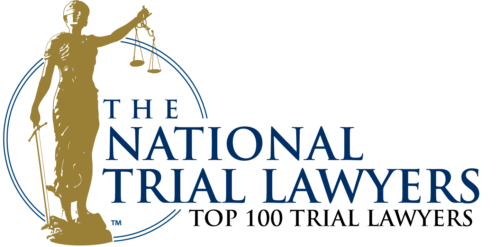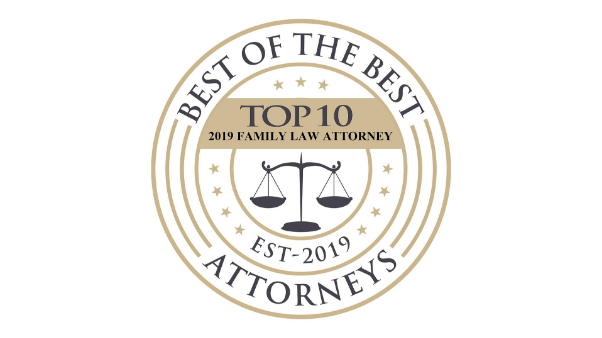A recent California Supreme Court case analyzed whether, under California law, an Alzheimer’s patient could be held liable for injuries they caused to a caregiver. In the past, a number of courts imposed liability on adults with mental deficiencies even if they were unable to appreciate that the conduct was wrongful. However, changes in public attitudes regarding mental conditions and illness combined with shifts in public policy regarding patient care and treatment are changing the legal landscape.
In a recent decision, the California Supreme Court found that a patient cannot be held liable for injuring a home healthcare worker. This case introduces several interesting items to consider. First, how have other jurisdictions handled matters like these? Second, how has Pennsylvania generally handled liability for injuries caused by patients. Finally, and in short, would a Pennsylvania court be likely to hold mentally incapacitated individuals liable for personal injuries even if they are unable to comprehend that the action or actions that caused the severe injury were wrong?

Conditions and Diseases like Alzheimer’s Can Cause a Patient to Lash Out
Before we move into the more legally oriented elements of this case, it is first important to understand a bit about Alzheimer’s disease. Alzheimer’s is the most common form of dementia and gradually grows more and more severe as the condition develops. Early signs of Alzheimer’s may be limited to short-term memory loss or more frequent senior moments. However, as the disease progresses, the impacts are much more severe affecting nearly all aspects of daily life. More advanced symptoms can include cognitive deficiencies, irritability, loss of orientation to time and place, language problems, and memory loss. A percentage of Alzheimer’s patients can also show increased aggression and they may lash out violently. Because there is no cure for Alzheimer’s, those with the condition must increasingly rely on family, friends, and caregivers for their daily needs. Unfortunately, sometimes those caregivers can be injured by an Alzheimer’s patient who lashes out due to the confusion, frustration, and loss of impulse control caused by the disease. Alzheimer’s is but one degenerative neurological disease that can lead to violent or aggressive actions.
How California and Other States have Handled Patient Liability for Personal Injuries to Healthcare Workers
Gregory v. Cott was recently decided by the California Supreme Court. The facts, in brief, are as follows – in 2005, Bernard Cott hired a home health care agency to care for his then 85-year-old wife who had been diagnosed with Alzheimer’s years earlier. The plaintiff, Carolyn Gregory, was assigned to care for the patient, Mrs. Cott. While working in the home, Gregory was injured when the patient bumped into her from behind while she was washing dishes. The bump caused Gregory to drop the knife she was washing resulting in an alleged loss of sensation in several fingers and recurring pain and discomfort. Gregory received worker’s compensation for her injuries and also brought a personal injury suit for negligence and premises liability. The trial court granted the defendant’s motion for summary judgment. A split Court of Appeal found the claims were foreclosed by the primary assumption of risk doctrine and affirmed. The California Supreme Court also affirmed the judgment on the same grounds.

Primary assumption of risk has been held in California to bar personal injury claims by those in inherently dangerous professions. Primary assumption of risk applies when, “as a matter of law, the defendant owes no duty to guard against a particular risk of harm.” In past decisions, this bar for most personal injury claims has been held to apply to firefighters, police officers, veterinarians (in regard to dog bites), kennel workers, and nurses who are injured through the course of their employment duties.
Here, while Gregory was not a nurse, she had been trained in caring for an Alzheimer’s patient. She was aware of the risks presented by working with an Alzheimer’s patient including that they may lash out or act violently. Furthermore, she was employed by a healthcare company expressly for the purposes of caring for an Alzheimer’s patient. Drawing on Neighbarger v. Irwin Industries, Inc., the court held that the plaintiff’s recovery should be barred, in part, because it is “…unfair to charge the defendant with a duty of care to prevent injury to the plaintiff arising from the very condition or hazard the defendant has contracted with the plaintiff to remedy or confront.” This rule construction enables unsafe or dangerous conditions to be corrected by a professional who best understands the attendant risks and challenges.
However, the California Supreme Court made clear that this was not an absolute bar to patient liability. The court writes, “our holding does not preclude liability in situations where caregivers are not warned of a known risk, where defendants otherwise increase the level of risk beyond that inherent in providing care, or where the cause of injury is unrelated to the symptoms of the disease. Furthermore, the court expresses a concern that the imposition of patient liability is likely to push more people into institutionalized care which is counter to public policy and, at best, an imperfect solution to the problem of injury to workers. In short, this matter shows that a question of liability can be extremely complex and fact-sensitive.
Other states have joined California as part of the general trend towards limiting patient liability in caregiver injury situations. The Colorado Supreme Court reversed the appellate court’s holding that a caregiver at a medical facility could recover for an intentional tort by a patient in White v. Muniz, 999 P.2d 814 (2000). The Supreme Court found that an individual with advanced Alzheimer’s would not have the requisite intent to harm or offend.
Also in 2000, an Indiana Supreme court case, Creasy v. Rusk, 730 N.E.2d 659, saw a nursing assistant injured by an Alzheimer’s patient. The court declined to alter the standard of care due to mental incapacity, but public policy concerns of avoiding institutionalization and the special relationship where the plaintiff was injured handling the risk they were hired for (fireman’s rule) lead the court to decline to impose liability.
Citing White v. Munoz, and in accord with the Indiana Supreme Court, a Vermont Superior Court likewise hold that mental deficiency is not a defense to an intentional tort, but it is relevant to the injury’s cause.

How might a Pennsylvania Court Rule on an Injury Caused by a Patient?
Pennsylvania has long held that a doctor can be held liable for injuries caused to a third party by a patient. However, the harm must be reasonably foreseeable by the doctor. In the 1990 case DiMarco v. Lynch Homes, a doctor was held liable for a failure to provide accurate information regarding the contagiousness of an STD. However, doctors’ liability has been limited by a number of cases. In Crosby v. Sultz (1991) a doctor is not liable for the possibility that otherwise controlled diabetes could flare-up and impair driving. Heil v. Brown (1995) held that a mental health worker was not liable when a patient had a subsequent episode causing a car accident. In both Estate of Witthoeft v. Kiskaddon (1999) and Hospodar v. Schick (2005) the court declined to expand DiMarco where extremely poor vision and a seizure disorder, though known by the doctors, did not create a private cause of action.
However, the foregoing matters do not address home care where the caregiver is injured by the very reason for their employment or the liability of the patient him or herself. In situations like these where occupational assumption of risk is involved, the approach Pennsylvania takes regarding the firefighter’s rule can best be described as nuanced. While a Pennsylvania Superior Court has ruled that the Fireman’s rule has been adopted by the state, the matter has yet to be considered by the Pennsylvania Supreme Court. However, police and fire officials who enter the property of another are generally held to be licensees in Pennsylvania meaning that they must be warned of latent or concealed dangers. Mull v. Kerstetter, 373 Pa.Super. 228 (1988). However, the landowner is not a guarantor of safety, rather their duty is to protect against hidden dangers. Winkler v. Seven Springs Farm, Inc., 240 Pa. Super. 641.
Based on the Pennsylvania court’s and legislatures reluctance to adopt the fireman’s rule explicitly, it seems fairly unlikely that the state would expand the fireman’s rule regarding injuries to healthcare workers and assumption of risk. However, if presented, it would be interesting as to whether the Pennsylvania courts would consider a healthcare worker who entered the home to be more akin to a rescuer, like in California, and thus a licensee, or engaged in business dealings and thus an invitee. As opposed to a licensee, the duty owed to an invitee is greater as the landowner must use reasonable care in the property’s maintenance and warn or protect the invitee from foreseeable harms.
Should the courts decide on the former, patient liability may technically exist, but since the worker would be aware of the reason for his or her employment and the attendant risks, liability would likely be limited to factors outside of the scope of employment or reason that the healthcare worker was on the property. That is, the practical effects of the approach would not be entirely dissimilar from the one taken by California where most liability is barred but failure to warn of a known risk, actions by the plaintiff that significantly increase the likelihood of risk, or separate events not related to healthcare would not be. But, should the court decide to apply the latter, liability could be expansive and apply for any harm the homeowner knew or should have known about.
Other alternatives to the approaches delineated above could include Pennsylvania courts finding a lack of intent for intentional torts, as per Colorado’s approach.

Liability for Personal Injuries is Fact-Sensitive and Complex
As all of these situations makes clear, liability can be a particularly complex topic fraught with factual and legal questions. Furthermore, when an injury has already occurred, a thorough understanding of the law and facts are essential to determining whether you may have a viable personal injury suit that may compensate you for medical bills, treatment, and more. Those concerned with potential liability or those already injured due to another’s actions should consult with an experienced lawyer to improve their understanding, take corrective action, or when planning on how to proceed after a catastrophic injury or wrongful death.
Sources:
Tobin v. Maier
Creasy v. Rusk
Gregory v. Cott















